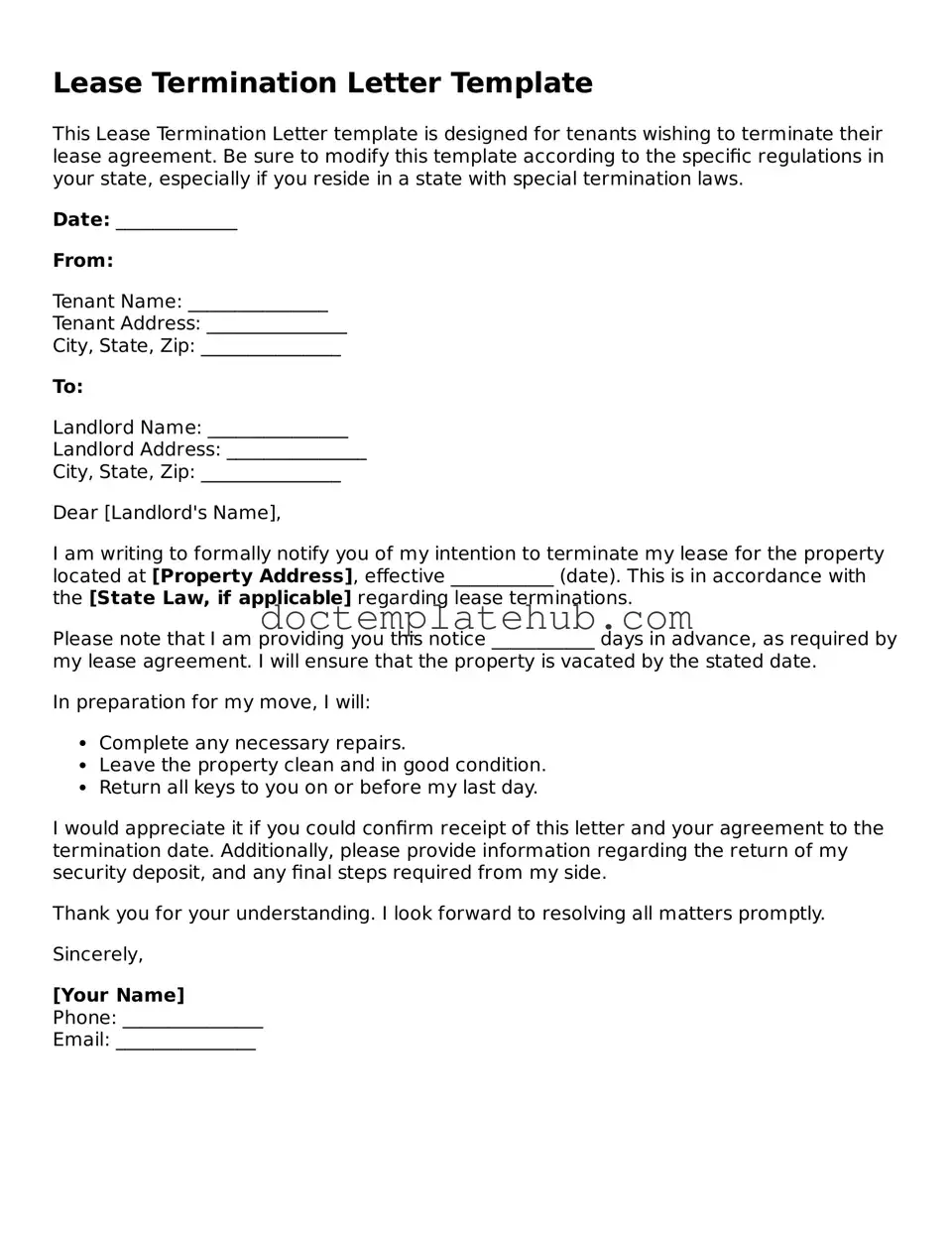What is a Lease Termination Letter?
A Lease Termination Letter is a formal document that notifies a landlord or tenant of the intention to end a lease agreement. It serves as written notice and outlines the date on which the lease will terminate. This letter is essential for ensuring that both parties are aware of the lease's end and can prepare accordingly.
When should I send a Lease Termination Letter?
The timing of the Lease Termination Letter is crucial. It is generally advisable to send this letter at least 30 days before the intended move-out date, although the specific notice period may vary depending on the lease agreement. Check the lease terms to confirm the required notice period. Sending the letter early helps prevent misunderstandings and allows time for any necessary arrangements.
What information should be included in the Lease Termination Letter?
A well-crafted Lease Termination Letter should include several key details. Start with your name and address, followed by the landlord's name and address. Clearly state the lease termination date and reference the lease agreement. It is also beneficial to mention the reason for termination, although this is not always required. Lastly, include your contact information for any follow-up communication.
Can I terminate a lease early with a Lease Termination Letter?
Yes, a Lease Termination Letter can be used to request an early termination of a lease. However, early termination may be subject to specific conditions outlined in the lease agreement. Review the terms carefully to understand any penalties or requirements. It is advisable to communicate openly with the landlord about your situation, as they may be willing to negotiate an early termination.
What should I do after sending the Lease Termination Letter?
After sending the Lease Termination Letter, it is important to keep a copy for your records. Additionally, follow up with the landlord to confirm receipt of the letter. This ensures that both parties are on the same page regarding the lease termination. Begin preparing for your move, and consider scheduling a final walkthrough of the property with the landlord to address any concerns before vacating.
